5 Digitisation of public services
Norway has succeeded in many areas in its efforts to digitise public services. Government agencies and municipalities increasingly offer digital services, and use of these services is growing dramatically. Use of public services online increased by 235 per cent between 2010 and 2015.14
5.1 Strong growth in use of the common login solution
The eID Gateway is a common login solution for public services online. In 2010, 20 million logins to public services were made via the eID Gateway. In 2015 the number of logins totalled almost 67 million.
Figure 4.3 shows key figures for the eID Gateway for the past four years. The number of public agencies using the eID Gateway for their login solution and the number of digital services requiring login via the eID Gateway are showing significant growth. The Agency for Public Management and eGovernment (Difi), which administers the eID Gateway, expects the growth to continue by around 20 per cent annually.
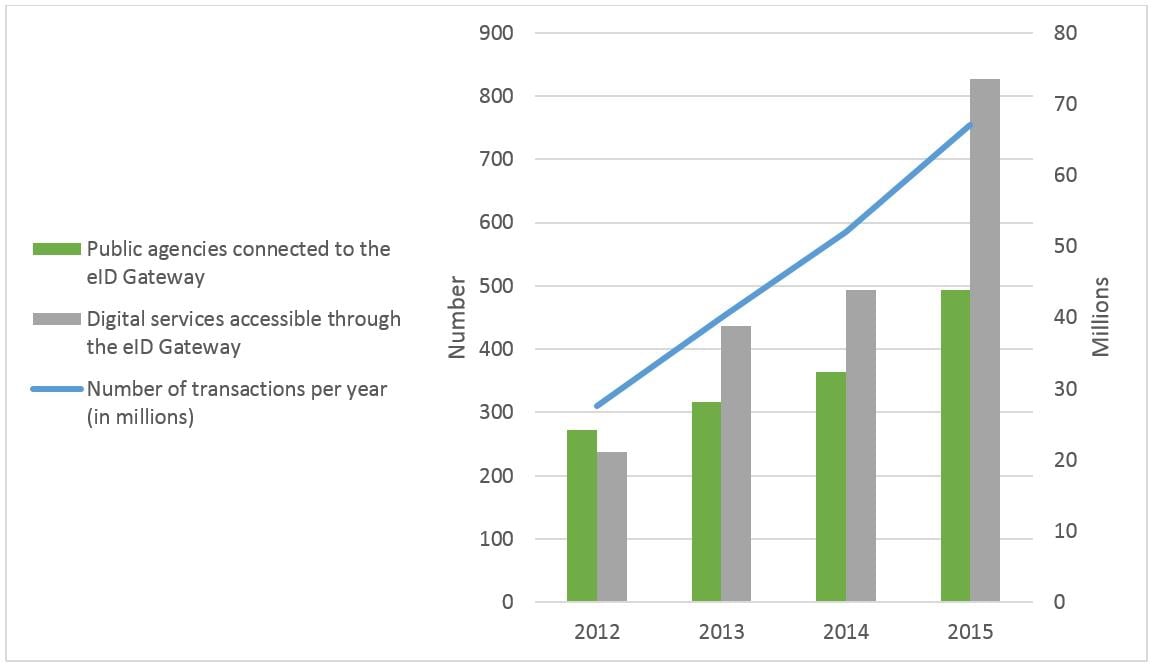
Figur 5.1 Figure 4.3 Key figures for eID Gateway.
Kilde: Source: Difi.
The figures for the eID Gateway show that the scope of digitisation in the public sector in recent years has been substantial. Many hundreds of services are now digitised and accessible online via the login solution. During this period 220 new enterprises have begun using the eID Gateway for digital services, and the transaction figures show that these services are widely used.
5.2 Widespread use of electronic services in business and industry
Since its launch in 2003, Altinn has played a significant part in the expansion of electronic forms and services. Hardly any other country can show similar expansion of electronic services to business and industry15. Altinn was specifically developed to facilitate coordination of digital services across public administration to make user dialogue with the public sector easier and faster. The Altinn platform handles data exchange with enterprises, voluntary organisations and private persons. Users can submit forms via any web portal or directly from an agency's computer system. Public agencies can send messages back to the user's message box or give access to relevant information.
Since its launch, over 200 million digital forms and messages have been transmitted via Altinn. Figure 4.4 shows the growth in recent years. In 2015 service owners delivered more than 28 million messages to Altinn's message box. Almost 3.5 million private users opened messages like these in 2015.
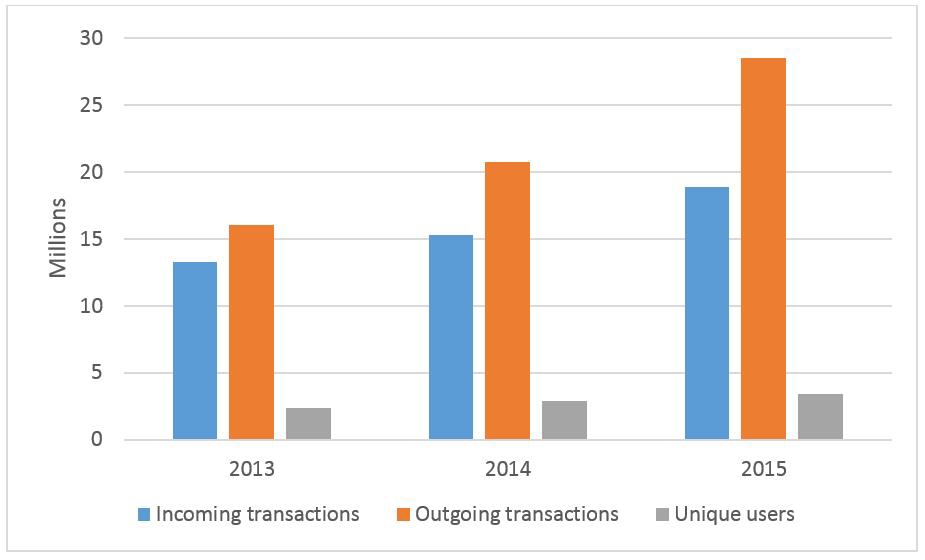
Figur 5.2 Figure 4.4 Key figures for Altinn 2013–2015.
Kilde: Source: Brønnøysund Register Centre.From consent to opt-out: citizens are ready
5.3 From consent to opt-out: citizens are ready
Amendments to the Public Administration Act and the Electronic Public Administration Regulations came into force in 2014. The requirement to obtain consent from recipients before corresponding online with private citizens, enterprises and others was abolished. For private citizens the requirement for consent was replaced by an option to opt out from receiving digitally individual decisions and other important messages from public administration. Business enterprises and other user groups do not have a similar option.
Few people have chosen to opt out. At 31 March 2016, 96,831 private citizens had opted out from receiving digitally individual decisions and other important messages from public administration. This constitutes around 2 per cent of the population aged over 15. Combined with the increased use of public digital services, the small number of citizens opting out shows that Norway's citizens are ready to communicate online with the public sector. The transition from the requirement to consent to the option to opt out has also made digital communication with citizens significantly easier for public administration.
Box 4.1 Digital mail to enterprises
Altinn was selected as the solution for managing digital mail from the public sector to enterprises. All enterprises shall receive digital messages from the whole of the public administration via their message box in Altinn.
All public authorities shall be able to send mail to enterprises via Altinn, including those who do not currently own services in Altinn under cooperation agreements.
Box 4.1 Digital mail to enterprises
Altinn was selected as the solution for managing digital mail from the public sector to enterprises. All enterprises shall receive digital messages from the whole of the public administration via their message box in Altinn.
All public authorities shall be able to send mail to enterprises via Altinn, including those who do not currently own services in Altinn under cooperation agreements.
Box 4.2 Digital mail to citizens
The digital mailbox for citizens provides public agencies with an easy and secure method of sending mail digitally to citizens.
Difi has entered into contracts on behalf of the entire public sector with mailbox providers e-Boks and Digipost. Citizens can choose which of these two mailboxes they wish to use. When new mail from the public sector arrives in the mailbox, citizens are notified via text message or e-mail. Subscribing to a digital mailbox is voluntary and free. At 31 March 2016, 875,510 citizens had opted to use a digital mailbox.
All public administrative bodies must have implemented or prepared a plan for implementing the digital mailbox by the first quarter of 2016. Tax deduction statements and tax assessments must be sent to citizens' chosen digital mailbox. The Government expects to have this in place by the time tax deduction statements for income year 2017 are ready to be issued in December 2016.
Box 4.2 Digital mail to citizens
The digital mailbox for citizens provides public agencies with an easy and secure method of sending mail digitally to citizens.
Difi has entered into contracts on behalf of the entire public sector with mailbox providers e-Boks and Digipost. Citizens can choose which of these two mailboxes they wish to use. When new mail from the public sector arrives in the mailbox, citizens are notified via text message or e-mail. Subscribing to a digital mailbox is voluntary and free. At 31 March 2016, 875,510 citizens had opted to use a digital mailbox.
All public administrative bodies must have implemented or prepared a plan for implementing the digital mailbox by the first quarter of 2016. Tax deduction statements and tax assessments must be sent to citizens' chosen digital mailbox. The Government expects to have this in place by the time tax deduction statements for income year 2017 are ready to be issued in December 2016.
Table 4.1 Digital mailbox for citizens.
Year | Q1 2016 |
No. of persons who have opted for mailbox | 875 510 |
Letters sent | 1 000 000 |
Kilde: Source: Difi.
5.4 Tax returns
The transition form consent to opt-out has had significant consequences for the Norwegian Tax Administration. Three of four taxpayers now receive their tax returns and tax assessments electronically.
Table 4.2 No. of persons with electronic tax returns over time.
Income year | 2012 | 2013 | 2014 |
No. of persons with electronic tax returns | 552 620 | 871 721 | 3 432 177 |
Kilde: Source: Norwegian Tax Administration.
5.5 Digital services in the Norwegian Labour and Welfare Administration
The Norwegian Labour and Welfare Administration (NAV) is an agency that has widespread contact with the population. Around 2.8 million citizens receive benefits such as child allowance, sick pay, pension, and unemployment benefit from NAV.
In 2014 NAV handled around 130 million enquiries. The nature of these enquiries varied, and around 64 per cent of them were handled via nav.no.
E-prescription in brief
Instead of a paper prescription, the physician issues an electronic prescription (E-resept). The patient can then collect the medicine from pharmacies all over the country. When redeeming her prescription, the patient states her personal identity number or name and date of birth. She must also provide proof of identity. Patients may authorise others to collect their medicine for them. E-resept contributes to a better, more secure way of handling drugs, a better overview of drug consumption, fewer fake prescriptions, easier settlement, and simpler renewal processes. The ‘My Prescriptions’ service in helsenorge. no provides citizens with a summary of active prescriptions, medicines dispensed during the past 30 days, and how many repeat prescriptions are left.
5.6 Helsenorge.no: Quality-assured health information
Helsenorge.no is the Health and Care Services' portal for health information and self-service solutions for the population. Launched on 15 June 2011, the portal is a guide to the health services and self-service solutions available in the health sector. The portal also provide information on health, preventive health, healthy living, medical conditions, treatments and patients' rights.
Table 4.3 Percentage of digital submissions to NAV in 2015 for some key services.
Service | Percentage digital submission |
Unemployment benefit | 75% |
Employment status form | 89% |
Registration as a jobseeker | 82% |
Work assessment allowance | 58% |
Pension | 58% |
Parental benefit (first-time application) | 55% |
Source: NAV.
Helsenorge.no will be further developed to become the central guide to the health services, with interactive services adapted to individual needs. On helsenorge.no users can log in to 'My Health' and gain access to personal services such as: 'My Prescriptions'; 'My Vaccines'; 'My User Fees'; and 'My Patient Record'. Citizens are also gaining access to their own Summary Care Records16 the service is gradually implemented throughout the country. At March 2016, over half of Norway's citizens have their own Summary Care Record. More services are under development, and some are being tested in selected areas.
Figure 4.5 shows the number of visits to helsenorge.no from February 2015 to January 2016.
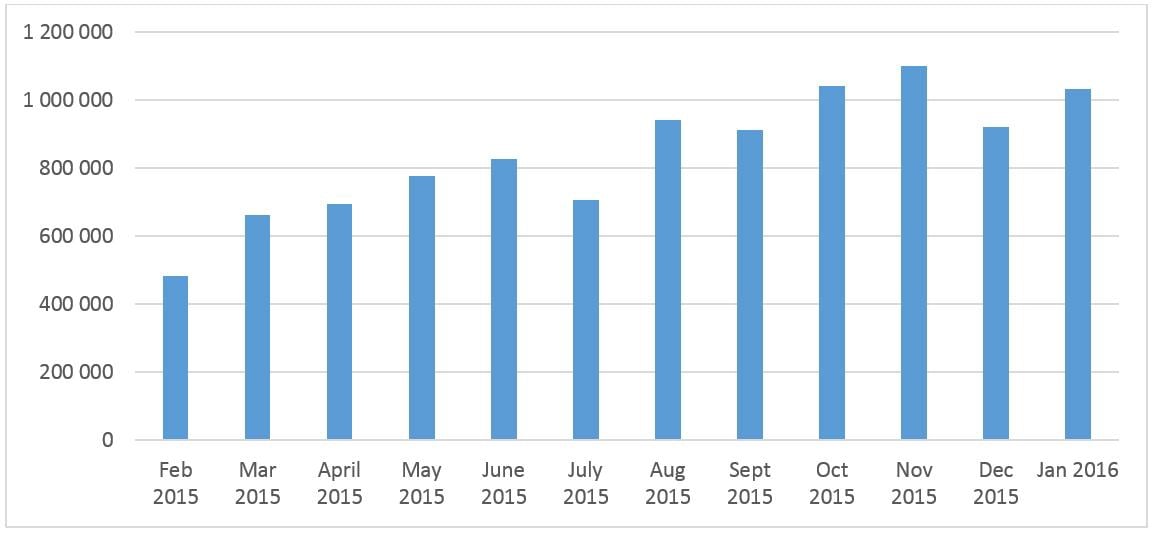
Figur 5.3 Figure 4.5 Number of visits to helsenorge.no: February 2015 to January 2016.
Kilde: Source: helsenorgebeta.net
5.7 Electronic prescription service
E-resept, the electronic prescription service, is now almost fully digitised. E-resept is both an important service for individuals and a coordinated service between actors handling prescriptions and drug information. E-resept is widely used by general practitioners, surgical appliances suppliers and pharmacies nationwide. E-resept is now being implemented in hospitals in all the regional health authorities.
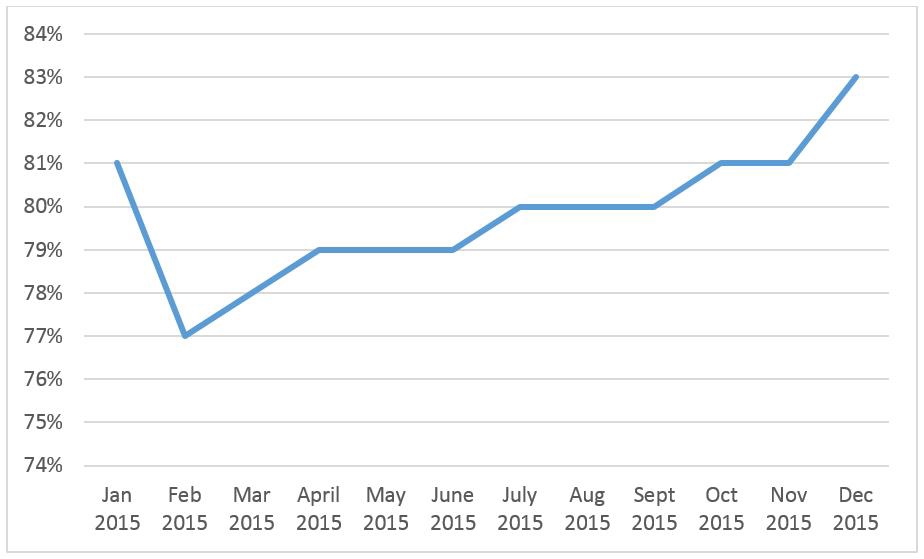
Figur 5.4 Figure 4.6 Proportion of packages sold via electronic prescriptions of the total number of prescriptions in 2015.
Kilde: Source: Norwegian Pharmacy Association/FarmaPro.
Box 4.3 E-prescription in brief
Instead of a paper prescription, the physician issues an electronic prescription (E-resept). The patient can then collect the medicine from pharmacies all over the country. When redeeming her prescription, the patient states her personal identity number or name and date of birth. She must also provide proof of identity. Patients may authorise others to collect their medicine for them. E-resept contributes to a better, more secure way of handling drugs, a better overview of drug consumption, fewer fake prescriptions, easier settlement, and simpler renewal processes. The 'My Prescriptions' service in helsenorge.no provides citizens with a summary of active prescriptions, medicines dispensed during the past 30 days, and how many repeat prescriptions are left.
5.8 Brønnøysund Register Centre: Digital registry services
The percentage of electronic submissions to the Brønnøysund Register Centre has been increasing for many years, and in 2014 totalled around 80 per cent. Since March 2014 all submissions delivered digitally to the Central Coordinating Register for Legal Entities and the Register of Business Enterprises have been answered digitally in Altinn within one hour after a decision was made.
From 2015 all submissions of annual accounts to and all decisions issued by the Register of Company Accounts have been conducted electronically.
5.9 A-ordningen: One electronic message, three national agencies
A-ordningen is a digital coordinated reporting scheme that was implemented on 1 January 2015. The scheme covers reporting information concerning employment and income to the Norwegian Tax Administration, the Norwegian Labour and Welfare Administration and Statistics Norway. Five forms, some containing the same information, have been turned into one monthly report called A-melding. Previously, some of the information employers submitted to these agencies was the same, though at different times depending on requirements stated on the individual forms. Now, reporting is conducted either from payroll systems or by registering in Altinn and then transmitted via one common channel to the Norwegian Tax Administration's receiving system. Paper forms can only be used in exceptional cases. Information is then forwarded to the agency concerned, based on the agency's authorisation to receive it.
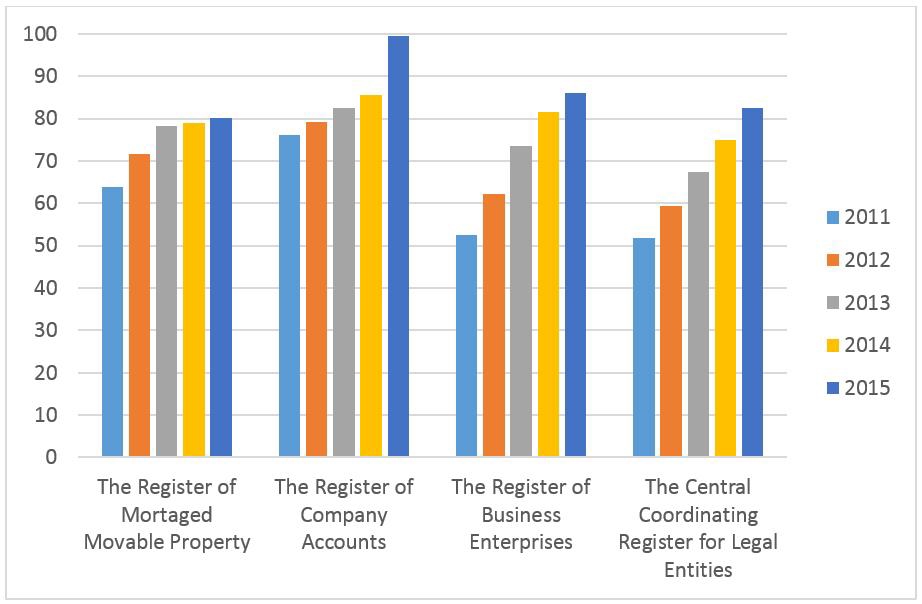
Figur 5.5 Figure 4.7 Proportion of electronic registrations in the Brønnøysund Register Centre, 2011–2015.
Kilde: Source: Prop. 1 S (2015–2016). NFD.
The A-ordningen scheme has meant that reporting to the agencies is now largely conducted electronically, and has made reporting simpler and cheaper for employers and others with reporting obligations. The scheme is based on a common set of regulations with common terms for all three agencies: the Act concerning Employer Reporting of Employment and Income Information, etc.17
5.10 New public digital services
The above discussion and figures show how the development of some central services and common solutions. Extensive work on digitisation is going on in public administration. Annex 1 contains a list of new digital services for citizens, the voluntary sector and business and industry. The list includes services that were launched after 1 January 2013.